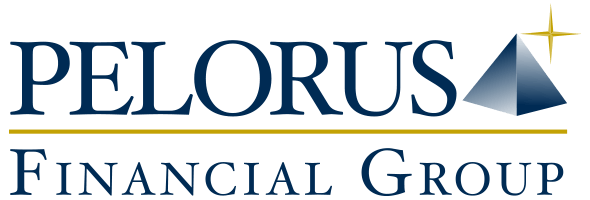The inspiration for this article came from a friend, an incorporated physician and director of a prominent downtown clinic.
The last time I visited him, the topic of tax efficiency and pensions came up. I asked if he paid into CPP. He confidently claimed that he did not and explained that he drew all his income in the form of dividends paying less tax and avoiding the obligation of having to make both the employer and employee contribution to CPP.
His overly self-assured claim of this strategy’s superiority triggered my curiosity. Is it truly better for a business owner or incorporated professional to draw all their income in the form of dividends?
Dividends with No Salary Avoids CPP Contribution, But at What Cost?
At first glance, the answer seems obvious. Only taking dividends avoids having to make CPP contributions (10.2% of net income for incorporated individuals up to a maximum of $5,497.80 in 2019). This can look attractive, if all the income is spent, since there is more to spend.
Some day, we all will either die at work or retire. The latter is the preferred option for most. The more you save and build wealth, the more comfortable your retirement will be. In an increasingly competitive world where technology is disrupting many business models, business owners and incorporated professionals cannot rely upon the sale of their business to fund their retirement. So, there should be a plan in place to build wealth outside the business.
Established strategies may need to be rethought. Recent changes to the income tax act with the new passive income rules have made it less attractive to transfer money to a holding company via tax free dividend and invest within the holding company.
The Financial Model Illustrates the Potential Opportunity Cost of a Dividend Only Strategy
Two scenarios for a 45-year-old incorporated professional with $250,000 of net business income (before salary or dividends) were examined. Under scenario 1, all income flows out as a dividend. Scenario 2 uses a mix of salary and dividends.
The analysis used one year of income to calculate the impact on disposable income, total funds invested, taxes paid and the future value of the invested funds in 20 years. Both scenarios assume lifestyle expenses of $125,000. All funds in excess of lifestyle expenses are invested with a maximum 1-year RRSP contribution made under the mixed salary dividend option. Growth of 6% before tax and 4% after tax for non-tax-sheltered investments were assumed.
Comparative Analysis of Dividend Only Income VS. Blended Dividend Salary Mix For 45-Year-Old Incorporated Professional
| Dividends Only | Salary + Dividends | ||
| Business Revenue | $250,000 | $250,000 | |
| Salary | $0 | ($185,000) | |
| CPP | $0 | $2,749 | |
| Income | $250,000 | $62,251 | |
| Corporate Tax (@13.5%) | ($33,750) | ($8,404) | |
| Business Net Income | $216,250 | $53,847 | |
| Salary (Before RRSP Contribution) | $0 | $185,000 | |
| CPP Payment | ($2,749) | ||
| RRSP Contribution | ($26,500) | ||
| Dividend (Ineligible) | $216,250 | $53,487 | |
| Personal Income Tax | ($65,580) | ($76,052) | |
| Disposable Income | $150,670 | $133,546 | |
| Spend | ($125,000) | ($125,000) | |
| Invest – RRSP ( Tax Sheltered Growth) | $26,500 | ||
| Invest – CPP ( Tax Shelter Growth) | $5,498 | ||
| Invest – Opne Acct. ( Taxable) | $25,670 |
|
|
| Total Invested | $25,670 | $40,544 | |
| RRSP Value in 20 yrs. (6.0% growth) | $0 | $84,989 | |
| Open Acct. Value in 20 yrs. (4% growth) | $56,246 | $18,726 | |
| $56,246 | $103,715 | ||
| CPP equivalent asset Value in 20 yrs./20 | $0 |
|
|
| Future Value | $56,246 | $113,820 | |
| Taxes Paid | ($99,330) | ($84,456) |
E&OE
Salary Dividend Mix Provides A Better Outcome
If you are planning for future retirement, a salary dividend mix provides a better outcome. Drawing only dividends does not create the earned income required for you to take advantage of registered retirement savings programs such as RRSPs, DPSPs or IPPs. You also do not get the benefit of the CPP, which while not large, does have real future value with its life-time guaranteed inflation adjusted income. When you combine the impact of more invested dollars with higher rates of compound growth (due to tax sheltering), additional CPP value and less tax, you get a lot more future value to spend in retirement.
As for my friend, he is more focused on purchasing his first home than retirement, so he is still pursuing a dividend only strategy.
This material has been prepared for informational purposes only, and is not intended to provide, and should not be relied on for, tax, legal or accounting advice. You should consult your own tax, legal and accounting advisers before engaging in any transaction. Neither Brendan Greenwood nor Pelorus Transition Planning Inc. or its affiliates provide tax, legal or accounting advice. This material is based on the perspectives and opinions of the writer only and does not necessarily reflect views of Pelorus Transition Planning Inc. The opinions or analyses expressed herein are general, and do not take into account an individual’s or entity’s specific circumstances. Investors should always consult an appropriate professional regarding their particular circumstances before acting on any of the information here. Every effort has been made to compile this material from reliable sources; however, no warranty can be made as to its accuracy or completeness. Investments are provided through Worldsource Securities Inc., sponsoring investment dealer and Member of the Canadian Investor Protection Fund and of the Investment Industry Regulatory Organization of Canada.
